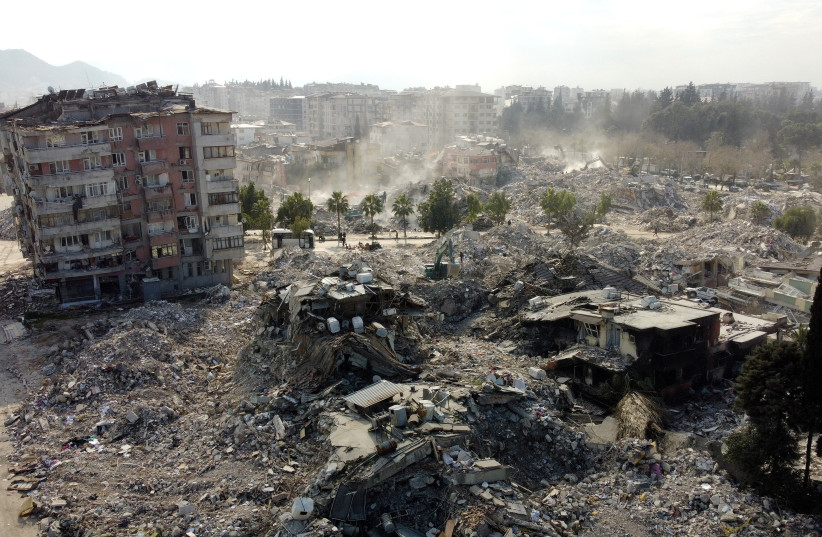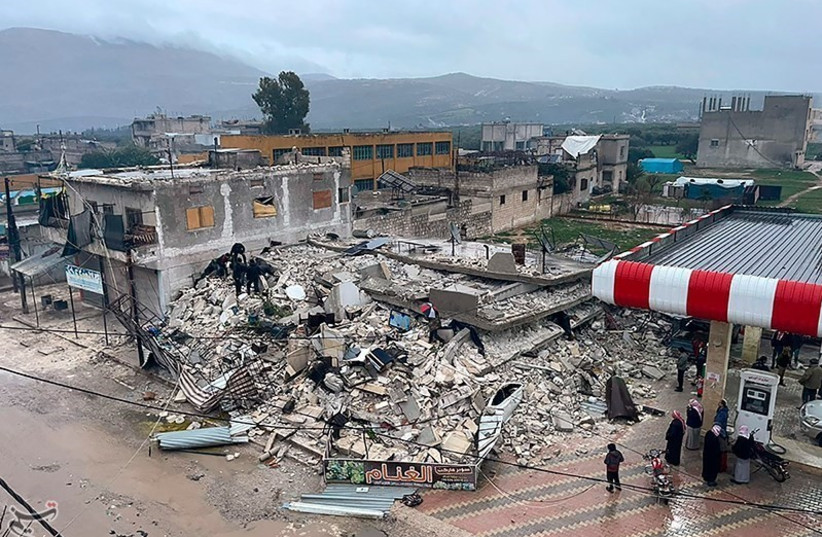The February 6 earthquakes that shocked Turkey and Syria were likely the most potent doublet ever to occur on land anywhere in the world, according to research published by Chinese scientists. Moreover, the first earthquake appears to match the largest earthquake ever to strike Turkey.
According to the research, the first mainshock happened around 4:18 a.m. local time and had a moment magnitude (Mw) of 7.95. About nine hours later, a second earthquake struck to the north, with an Mw of around 7.86.
“This corresponds to one of the largest tremors in more than 2,000 years of Turkish history,” said Xiaodong Song, chair of the SinoProbe Laboratory in the School of Earth and Space Sciences at Peking University, who led the research that was published this week in the journal Earthquake Science.
Both estimates are higher than other published results.
A doublet is when two or more large earthquakes occur nearby a short time apart. These events occasionally occur in subduction zones and rarely on the continent, Song explained in an interview with the Jerusalem Post.

He cited several previous events in Turkey, including an event in 1688 on the North Anatolia Fault that was determined in the literature to weigh in at a magnitude of about 8.0. However, he said that “there were no good assessment records at the time to determine magnitude accurately.”
There was also a large earthquake in 1939 in Erzincan with an estimated moment magnitude of 7.8.
Magnitude is a fundamental parameter for measuring the power of earthquakes and is of great interest to scientific research and the general public, Song said. However, there are often discrepancies when it comes to measuring earthquakes.
In the case of these February events, magnitude results have been reported with significant discrepancies. Even the difference in magnitude between the first and second quakes has appeared highly uncertain, ranging between 0.1 and 0.4.
Song’s team aimed to fill that gap using a novel and reliable long-period coda moment magnitude method to measure the sizes of the two events.
“The method is specially designed for large earthquakes (MW>7.5), and the results are minimally affected by source complexity and propagation effects,” the first author, Peking University Ph.D. student Xinyu Jiang explained. “With hours of long-period coda data, the method can produce a robust moment magnitude without further corrections.”
Since completing his latest paper, Song said his research group is collaborating with other groups to determine why such powerful earthquakes occured now and if there could be a way to predict such events in the future.
What causes these earthquakes and who is at risk?
Turkey, he said, sits at the juncture of several large tectonic plates: Africa, Anatolia, Arabia and Eurasia, which is why the country is prone to big earthquakes. However, in most previous events, ruptures happened only along one fault segment. This time, multiple segments were broken, and the speed of the rupture was faster (a so-called “super-shear” rupture) in several segments than in a typical rupture.
“In this case, we believe several places broke with a super-shear speed and triggered additional breaks,” Song told the Post. “This super-shear rupture has to do with the stress accumulated along different fault segments. The details of the triggering process are still being worked out. In addition, the super-shear rupture also generated strong ground shaking over a larger area, which may explain the heavy damage of the doublet events.”
Song warned that Israel is also located along faults and could be vulnerable. Simultaneous rupture of multiple fault segments could occur to generate a more significant event. In addition, he said external factors could affect earthquake occurrence, particularly water, which other studies have shown can change the behavior of faults.
“But the main cause of earthquakes is the interaction between different plates,” Song explained. “There are several major plates under the earth’s surface, and they move relative to each other, constantly adjusting to tectonic forces. So sometimes when stress is accumulated beyond a limit, it has to be released.”
He added that scientists are “still far from predicting a big earthquake,” but “there are a lot of things we can do” to help reduce such events’ dangerous and deadly impact.

For example, Song said countries like Turkey and Israel should immediately invest in strengthening structures and "prepare the population so that they know what to do if an earthquake does happen. It can make a huge difference in terms of mitigating earthquake risks."
Finally, he recommended that countries prone to earthquakes do a better job of collaborating and sharing best research and practice.
“How best to cope is another lesson we can learn from each other,” he said.
